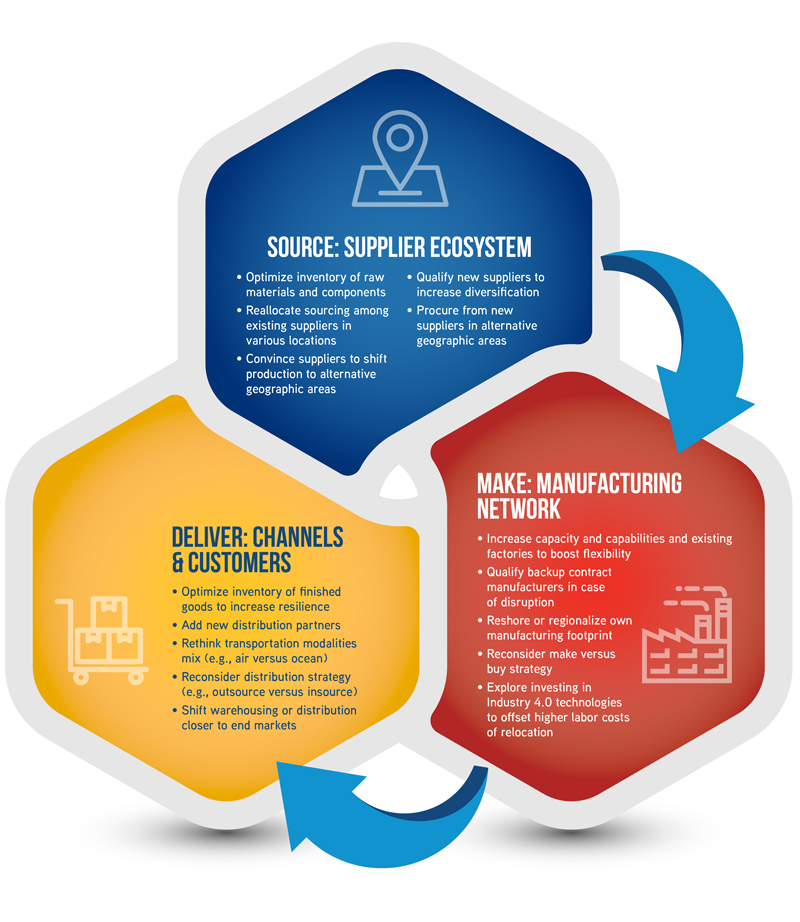Supply Chains Under Siege | Part 3 – Strategies to Navigate the Maze
The first two articles of this series (shown in the sidebar) addressed the various disruptions and their impact on global and domestic supply chains. This final article will identify potential strategies to mitigate the negative impact of all supply chain disruptions.
Strategies to Reduce Disruptions
The Kearney Institutes’ recent report suggests that COVID-19 and geopolitical tensions should cause all companies to rethink the criteria they use to assess and reconfigure their global and domestic supply chains. Improvements are probable not only to product sourcing overseas but also to lower operating costs, achieve better service levels, and create more resilience and flexibility in domestic supply chains.
Increase visibility
One of the most common supply chain strategies and objectives is to increase supply chain visibility between the various suppliers and carriers who “touch” a product end-to-end. There is a global initiative underway to achieve interoperability between different identification and tracking standards of various transportation modes. For many companies, COVID-19 confirmed common interoperability standards cannot be achieved too soon.
Regionalize the footprint
Another important strategy is to regionalize a company’s global footprint while reducing its dependence on China. For U.S companies, this means more production in North America instead of Asia. While production costs may be higher, transportation costs will be lower, and delivery times will be shorter. Dual-sourcing of key suppliers and increasing inventory levels also improve a company’s supply chain and adds resilience from unforeseen disruptions.
Reshoring of a U.S. company’s manufacturing footprint should always include consideration of Mexico as a nearshoring alternative. Labor costs in Mexico are only 14% of a similarly skilled U.S. worker, and transport times are 75% less than products from Asia.
Multi-faceted Risk Mitigation
If a company’s supply chain is under stress with abnormal risk of compromises, the chart below first published by Boston Consulting Group provides an array of potential remedies. The three-pronged strategy breaks down into components of Source (supplier ecosystem), Make (manufacturing network), and Deliver (channels and customers).
U.S. Leadership and Strategy
Finally, a more rigorous U.S. industrial policy (not unlike during WWII) might also pay dividends if Congress could agree on a bipartisan strategy. President Trump had already signed two executive orders to fund new domestic production facilities and streamline regulations for pharmaceutical reshoring. However, with the U.S. election yielding Joe Biden as President, there may be shifting priorities.
Nevertheless, waiting for U.S. policy initiatives will not be enough. All domestic companies dependent on a global supply chain must carefully assess their situation and take specific measures to reduce risk and improve supply chain resilience.
This three-part series on supply chain disruptions sought to identify risks and costs in the U.S. and across the globe brought into the limelight by COVID-19. Furthermore, we have identified definitive strategies, tactics, and actions that can be taken, which positively affect today and tomorrow. We trust this series has served you well, fostering thoughts and actions that will benefit your business.


